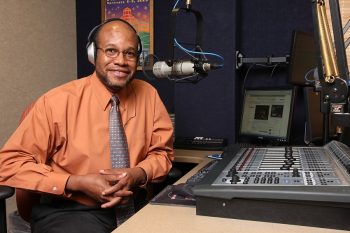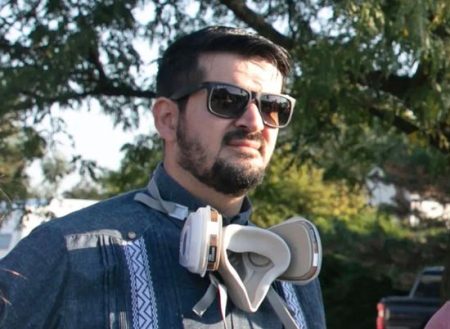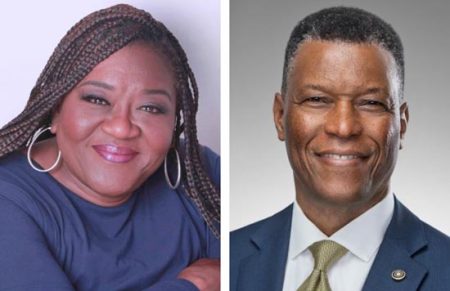Court Ruling on Race Not a Death Knell For School Excellence
Civil rights organizations and the top Democratic presidential candidates lambasted the Supreme Court’s narrow ruling that jettisoned the racial balance plans in the Louisville and Seattle school districts.

|
| Earl Ofari Hutchinson |
By Earl Ofari Hutchinson
Their anger was predictable and justified, but it ignores two things. The first is that most big city school districts have been re-segregated for years. And according to Harvard University’s Civil Rights Project, segregation in school districts has gotten worse in the past decade.
The students in these schools are poorer than students in predominantly, or exclusively white schools, and they do far worse in reading and math tests than non-black or black students at racially mixed schools. The black and Latino students who attend racially isolated schools are not in the schools because of Jim Crow segregationist laws, or failed school bussing policies.
Two decades of
pro-integration court decisions, limited bussing programs, civil rights
legislation, and the election and the appointment of soaring numbers of
blacks and Latinos to boards of education have racially remade public
education. Black and Latino public school superintendents and top
administrators are now fixtures in most urban school districts.
The blame for the chronic school re-segregation is the deep persistence
of housing discrimination, poverty, and the near universal refusal of
federal and state courts to get involved in any more school
desegregation cases.
Then there’s the continuing flight of white, as well as black and
Latino middle-income persons, to the suburbs. This insures that even
more poor black and Latino students will be perpetually trapped in
segregated schools. The hodge-podge of panaceas Bush and educators
ladle out to raise minority achievement levels include school vouchers,
a wholesale dump of incompetent teachers and bureaucrats, magnet
schools and annual testing. Some districts advocate scrapping race
altogether and using income and student and parent interest as the
means to achieve racially balanced schools.
The irony is that they may be overreacting to the court ruling —
Though, the court didn’t give civil rights advocates much to cheer
about in its ruling. Supreme Court Justice Anthony Kennedy who voted
with the majority to scrap race mused that there might be some
situations in which race could be used. He didn’t say what those
situations might be, but at least it was an acknowledgement that
education, as are most other things in American life, isn’t totally
race neutral. Even if the court had upheld the Louisville and Seattle
integration plans, it wouldn’t have changed the racial picture for most
urban school districts. The bitter truth is that while segregated
public schools will never again be the law of the land they remain a
fact of the land and the overwhelming majority of black and Latino
students will be stuck in segregated schools. And in those schools that
appear to be racially integrated there’s less than meets the eye.
Studies show huge gaps in the treatment of black and Latino students by
teachers and administrators. They are more likely to be piled in
special education and vocation classes, and suspended or expelled at
far higher rates than white students. That points to the second
problem, that civil rights advocates and the Democratic presidential
candidates refuse to acknowledge. And that is that even segregated
schools don’t have to be inherently failing schools.
There are countless examples where teachers and administrators have
rolled up their sleeves and worked hard to transform racially
segregated school from permanent monuments to educational failure to
models of success. They fight hard to upgrade the texts and facilities,
to get administrators to purchase more computers, and to get the
highest caliber teachers, counselors, and administrators possible at
these schools. They demand that teacher unions actively work to enforce
strict professional standards to hold teachers at failing inner city
public schools accountable for the performance of their students.
Most important, they have buried the myth that black and Latino
students can’t or won’t learn. During the nightmare years of legal
segregation, polls showed that blacks prized education above everything
else, and regarded it as their children’s passport out of poverty and
segregation. Generations of black and Latino students attended de-facto
segregated inner city schools and legally segregated schools in the
South. Most graduated, went on to college, and became successful in
business and the professions.
Teachers who were dedicated and determined that they attain excellence
in their studies taught the students. The teachers expected and
demanded that their students perform up to the same level as white
students. They challenged the students to learn, set specific goals,
demanded their full participation in classroom work, and gave them
positive and continual direction and reinforcement.
The Supreme Court ruling is not the death knell for diversity efforts
of school districts. They just have to be more creative in how they
attain it. But that doesn’t mean giving up on the students that may
never sit in an integrated classroom.
Columnist Earl Ofari Hutchinson is an author and political analyst.








